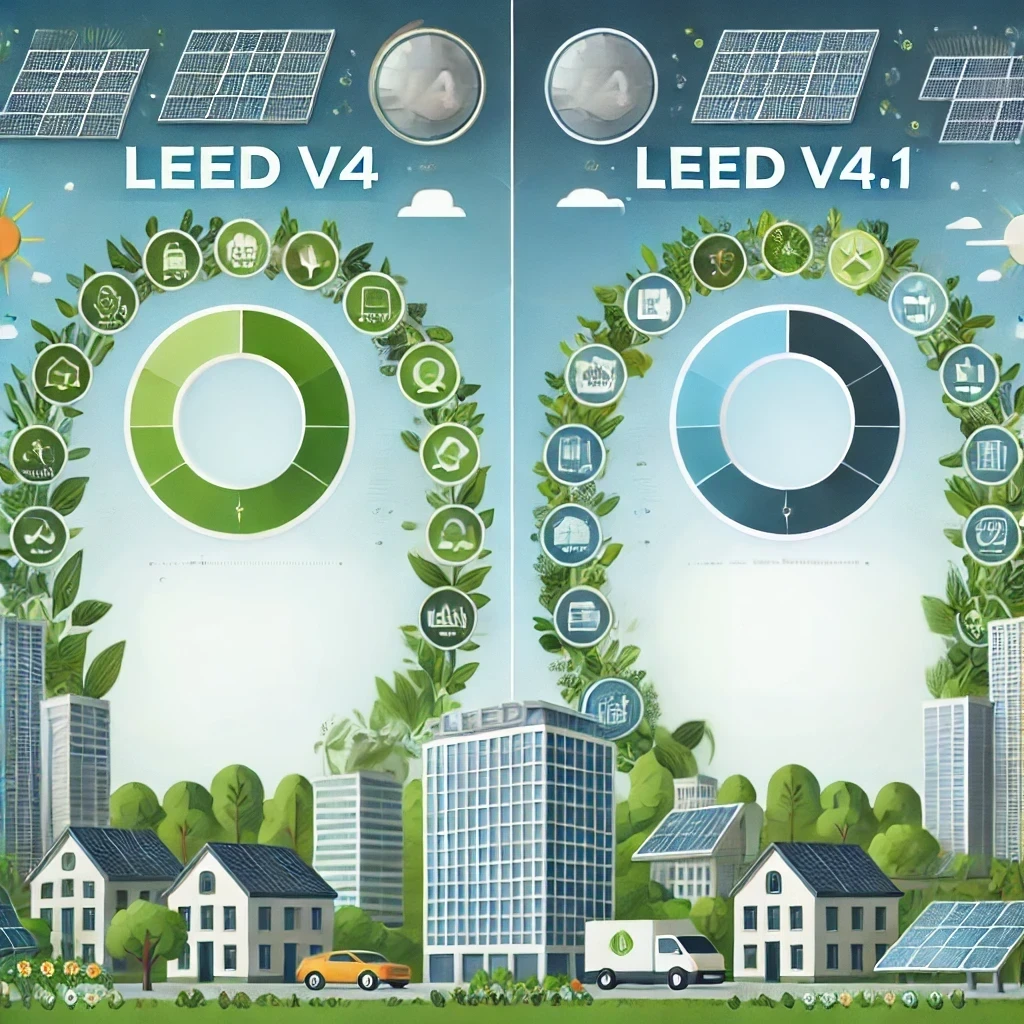Leadership in Energy and Environmental Design (LEED) is one of the most widely recognized green building certification systems, developed by the U.S. Green Building Council (USGBC). While LEED v4 set high sustainability benchmarks, many project teams found its requirements challenging to meet. In response, LEED v4.1 was introduced as an updated, more flexible version, maintaining core sustainability principles while providing simplified compliance paths, adjusted credit requirements, and improved feasibility for a broader range of projects.
This guide explores the key differences between LEED v4 and LEED v4.1, focusing on major credit categories and certification processes.
1. Energy Performance Adjustments
LEED v4:
Required compliance with ASHRAE 90.1-2010, making energy modeling complex.
High energy efficiency thresholds made certification difficult.
LEED v4.1:
Updated to ASHRAE 90.1-2016, improving feasibility.
Introduced alternative compliance paths for energy performance.
Adjusted energy thresholds, allowing more projects to achieve higher certification levels.
2. Improvements in Materials and Resources (MR) Category
LEED v4:
Required Environmental Product Declarations (EPDs) and Health Product Declarations (HPDs).
Limited manufacturer availability of compliant materials.
Rigid life-cycle assessment (LCA) requirements.
LEED v4.1:
Expanded definitions for EPDs and HPDs, making documentation easier.
More flexible material selection criteria.
Simplified LCA requirements, improving project adaptability.
3. Updates to Water Efficiency (WE) Category
LEED v4:
Required strict indoor and outdoor water use reductions.
Irrigation and plumbing fixture requirements were not always practical for certain climates.
Mandatory water metering.
LEED v4.1:
Introduced more flexible outdoor water use requirements.
Updated indoor water reduction targets based on regional needs.
Encourages smart metering technology instead of making metering a rigid requirement.
4. Enhancements in Indoor Environmental Quality (IEQ)
LEED v4:
Required strict air quality testing and low-emitting materials.
Compliance with ventilation and VOC limits was difficult for many projects.
LEED v4.1:
Expanded air quality monitoring options.
Introduced alternative compliance paths for low-emitting materials.
More flexibility in thermal comfort and acoustic performance requirements.
Encourages real-time air quality monitoring.
5. Increased Flexibility in Transportation and Location Credits
LEED v4:
Heavily focused on public transit access for alternative transportation credits.
Required bicycle infrastructure for specific projects.
Encouraged EV charging stations but did not prioritize them.
LEED v4.1:
Offers more flexible pathways for transportation credits.
Prioritizes EV charging infrastructure with additional credit incentives.
Expands definitions for alternative transportation, including ride-sharing and mobility programs.
6. Certification and Documentation Process Improvements
LEED v4:
Required extensive documentation and third-party verification.
Time-consuming submission and review process.
LEED v4.1:
Simplified documentation requirements to ease certification.
Allows pre-certification and phased certification for ongoing projects.
Introduced pilot credits, encouraging innovation in sustainable design.
More efficient review process, reducing project delays.
Conclusion
LEED v4.1 was designed to address the challenges of LEED v4, making it a more accessible and adaptable certification system. Key updates include:
More achievable energy and water efficiency targets.
Expanded material transparency credits with flexible compliance paths.
Greater flexibility in indoor air quality and transportation strategies.
Streamlined documentation and review process to minimize delays.
By refining the certification process and offering practical sustainability solutions, LEED v4.1 ensures that green building certification remains feasible for a wider range of projects. This update provides a smoother path toward sustainability, making energy-efficient, environmentally responsible buildings more achievable than ever before.

